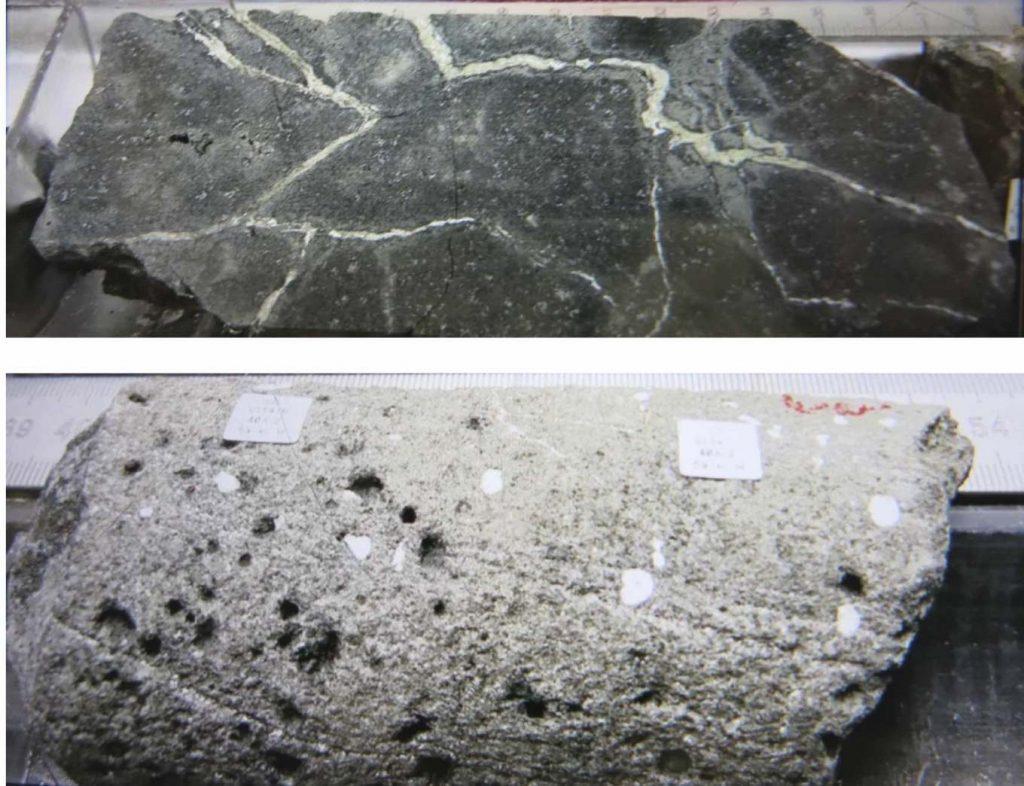
Rocks Bring Happiness
Thrilling rocks from the deep center of Ringvent are todays topic! If rocks don’t rock your boat after following this blog for weeks, stop reading right here and look for funny cat videos. But to wrap up yesterday, we are bidding farewell to the outer perimeter of Ringvent with Kuster fluid sampling of the second hole here, and two nice photos. First, the Kuster tool is brought from the drill rig, still warm from its hot subsurface deployment, and holding 600 ml of deep subsurface fluid.
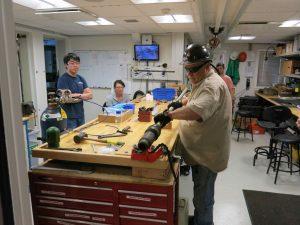
This time, we devise a new system of holding the Kuster tool while the fluid is extracted, and it involves Nicolette; she is holding up her end for 25 minutes straight while being tickled (or being threatened to be tickled) by technicians who shall remain unnamed.
But now we have returned to Ringvent, to its dark, brooding, methane-soaked center. The power of the ring was just too much; co-chiefs and scientists succumbed to this gamble. The order to assemble the RCB drill was given… and it is now drilling in the center of Ringvent and strikes hard rock at ca. 140 m depth, where we expected it to run into the massive sill that keeps Ringvent going. Recovery is excellent, and instead of scattered shards as previously recovered by XCB, nice whole round cores keep coming.
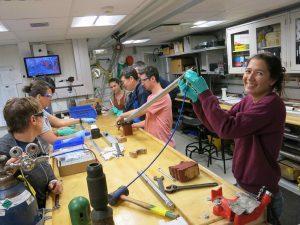
The mood instantly brightens. The microbiologists have prepared a detailed collaborative sampling scheme, expecting a difficult struggle to find reasonable samples, but with such good recovery it is possible to choose and even to be picky. Candidate samples go straight into N2-flushed bags, and Didi and Yuki can be cheerful again.
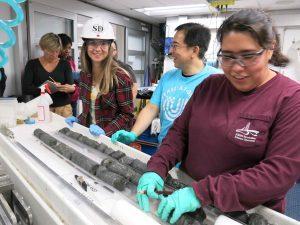
For proper curation, Tim Fulton is taking pictures of each complete rock core, before selected samples are taken out into anaerobic storage.
What is all this about? Rock hotels for microbes. They cannot exist in the solid rock itself, but wherever sediment- or carbonate-filled veins or hollow vesicles show up, microorganisms could take up residence, for example in these specimens. The upper layers of the Ringvent sill are still in an acceptable temperature range, near 80°C.
The sills are alive, to the sound of microbes… and what if these microbes produced a lot of gas? Thanks to our excellent shipboard geochemistry team, we know already that the Ringvent sills reek of methane and other alkanes… but to sample these cores in bite-sized pieces, tools will be required that are not standard repertoire in microbiology. Here, Yuki is evaluating his choices, presented by Marine Instrument Specialist Garrick.
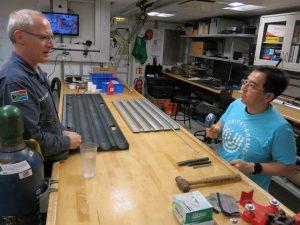
This blog post first appeared on Oct. 22 on my daily blog of EXP385. Make sure to go to expedition385.wordpress.com to read the latest updates of this expedition!